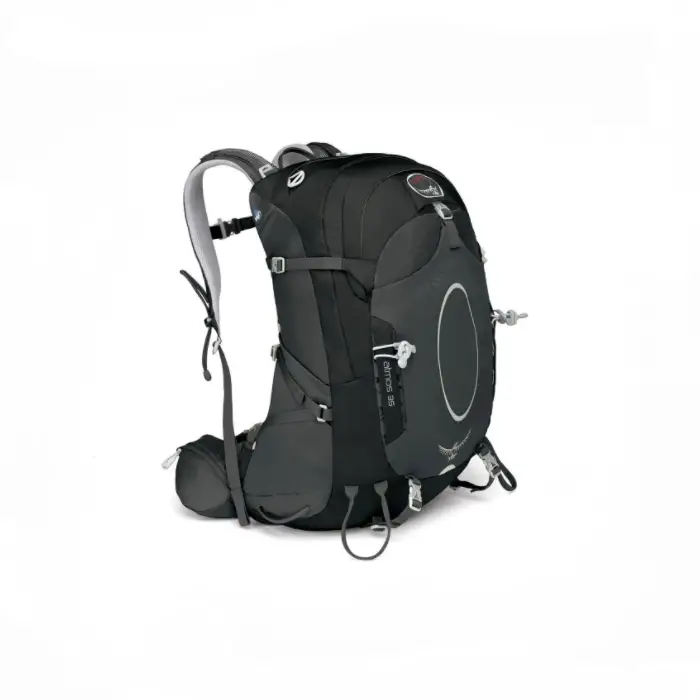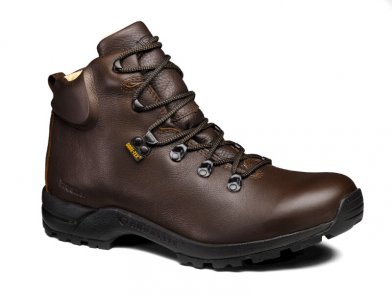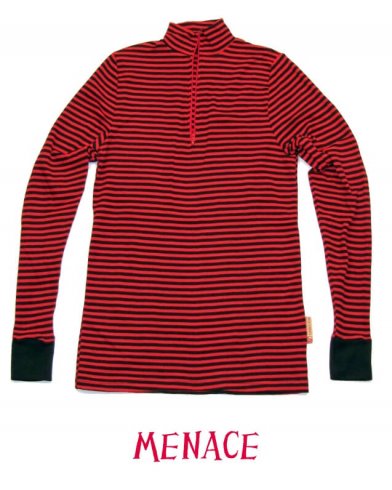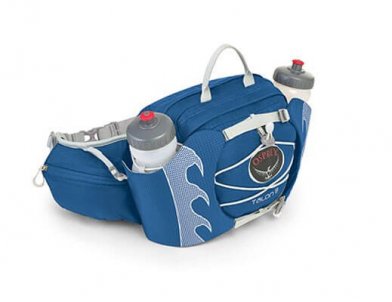Osprey – Atmos 35 Backpack
SUMMARY: The Osprey Atmos 35 has been flawless in terms of usability, comfort and robustness after months of being dragged through woodland, thrown in Land Rovers and generally not really cared for. It is a very, very lightweight pack for its size, but doesn't compromise on performance or support.
Editor's Pros & Cons
Pros
- High-quality build materials
- Great stability
- Good range of pockets
Cons
- On the expensive end of the spectrum
Review
When it's cold, dark and late. When you've worked a full day and been thinking about an early night but you get called out to help on a missing person search, you want a backpack which is going to hold all your gear and not require much mental effort to interact with. The Osprey Atmos 35 is just that kind of pack. It seems to have features which are just in the right place, and details which are intuitive so that you can spend more energy in doing what you need to do, and less on fighting with zips and pockets and uncomfortable straps.
I've been using the Atmos 35 for several months as a long-term test during searches and it has performed brilliantly in all weathers.
35 litres is a large daypack, and the start of the type of pack sizing where you need proper back and hip support because the loads you can carry in a pack this size are significant. My SAR pack is stuffed with all sorts of essential items and weighs in at a fairly hefty 9kg before I've added any water or extra clothing. So a lightweight bag is a must, and the Atmos 35 comes in at a paltry 1180g, which is pretty darn light for a pack with this much support.
Osprey are particularly good at developing lightweight, but fully-functioning packs and despite the low mass of the Atmos 35, there doesn't seem to have been any compromise. They've incorporated a metal frame which is held off your back by their Airspeed system (a mesh presses on your back and holds the pack off by about 5cm, to allow air flow and less sweatiness). This doesn't seem to have much effect on the load or cause any imbalance.
The Atmos comprises of one large main pocket, with a second smaller pocket at the top that can be used to house close-at-hand items or in my case a load of torches. Both of these, and a third front-pocket big enough for maps, are sealed with a 2-way zipper and stormflaps, and haven't leaked for me yet.
The main compartment contains an elasticated section for a bladder which can be fed out through tube holes on either side of the pack. Or if you prefer bottles (which I do) then there are two large elasticated pockets on the lower sides of the pack. The first time you use these, you'd be forgiven for being perplexed that the main-compartment's compression straps run inside the pockets.
The Atmos 35 has a stretchy Lycra-like front panel which gets wet in the rain, but is mightily useful for stashing a lightweight jacket which needs quick access - a webbing and buckle arrangement keep things from falling out.
The waistbelt of the Atmos features zippered pockets on both sides which are ideal for compass, pencil, phone or a small wallet, and like all of the zips on the bag has a large pull fastener so you can use everything with gloves. Osprey's system for tightening the waistbelt (you should be taking the weight of a pack this size through your hips) is neat and doesn't leave any trailing straps.
The straps of the Atmos are generously foam-padded and moderately breathable through a combination of spacer-mesh and holey foam shapes. With their shoulder adjusters, tapered shape and chest harness you can fine-tune a supremely comfortable fit.
As with all of the Osprey packs we've tested, the build quality, materials and finish of this pack are excellent. It's very clear to see why Osprey sell so many packs worldwide even if their pricing looks, on paper, to be a lot higher than entry-level competition. I think that this is definitely a case of you getting what you pay for.
I've been using the Atmos 35 for several months as a long-term test during searches and it has performed brilliantly in all weathers.
35 litres is a large daypack, and the start of the type of pack sizing where you need proper back and hip support because the loads you can carry in a pack this size are significant. My SAR pack is stuffed with all sorts of essential items and weighs in at a fairly hefty 9kg before I've added any water or extra clothing. So a lightweight bag is a must, and the Atmos 35 comes in at a paltry 1180g, which is pretty darn light for a pack with this much support.
Osprey are particularly good at developing lightweight, but fully-functioning packs and despite the low mass of the Atmos 35, there doesn't seem to have been any compromise. They've incorporated a metal frame which is held off your back by their Airspeed system (a mesh presses on your back and holds the pack off by about 5cm, to allow air flow and less sweatiness). This doesn't seem to have much effect on the load or cause any imbalance.
The Atmos comprises of one large main pocket, with a second smaller pocket at the top that can be used to house close-at-hand items or in my case a load of torches. Both of these, and a third front-pocket big enough for maps, are sealed with a 2-way zipper and stormflaps, and haven't leaked for me yet.
The main compartment contains an elasticated section for a bladder which can be fed out through tube holes on either side of the pack. Or if you prefer bottles (which I do) then there are two large elasticated pockets on the lower sides of the pack. The first time you use these, you'd be forgiven for being perplexed that the main-compartment's compression straps run inside the pockets.
The Atmos 35 has a stretchy Lycra-like front panel which gets wet in the rain, but is mightily useful for stashing a lightweight jacket which needs quick access - a webbing and buckle arrangement keep things from falling out.
The waistbelt of the Atmos features zippered pockets on both sides which are ideal for compass, pencil, phone or a small wallet, and like all of the zips on the bag has a large pull fastener so you can use everything with gloves. Osprey's system for tightening the waistbelt (you should be taking the weight of a pack this size through your hips) is neat and doesn't leave any trailing straps.
The straps of the Atmos are generously foam-padded and moderately breathable through a combination of spacer-mesh and holey foam shapes. With their shoulder adjusters, tapered shape and chest harness you can fine-tune a supremely comfortable fit.
As with all of the Osprey packs we've tested, the build quality, materials and finish of this pack are excellent. It's very clear to see why Osprey sell so many packs worldwide even if their pricing looks, on paper, to be a lot higher than entry-level competition. I think that this is definitely a case of you getting what you pay for.












